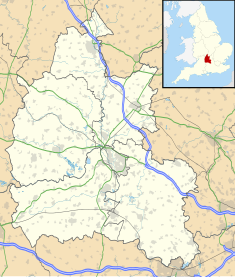Mapledurham Watermill
| Mapledurham Watermill | |
|---|---|
 |
|
| Location | Mapledurham, Oxfordshire, England |
| Coordinates | 51°29′8.52″N 1°2′14.82″W / 51.4857000°N 1.0374500°WCoordinates: 51°29′8.52″N 1°2′14.82″W / 51.4857000°N 1.0374500°W |
| Built | 15th to 19th century |
| Governing body | Mapledurham Estate |
|
Listed Building – Grade II*
|
|
| Official name: The Mill | |
| Designated | 24 October 1951 |
| Reference no. | 1059523 |
Mapledurham Watermill is a historic watermill in the civil parish of Mapledurham in the English county of Oxfordshire. It is driven by the head of water created by Mapledurham Lock and Weir, on the River Thames. The mill was built in the 15th century, and further extended in the 17th, 18th and 19th centuries. It is a grade II* listed building and is preserved in an operational state.
The mill also houses a micro hydro-electric power station, using a 3.6-metre (12 ft) Archimedes' screw turbine to generate electricity for sale to the National Grid. The turbine produces some 83.3 Kilowatts, which is sufficient to power about 140 homes.
A mill was already present at Mapledurham at the time of the Domesday Book. The central section of the current mill building dates back to the 15th century. Originally the mill had a single water wheel, on the river side of the building. The mill was increased in size in the 1670s, and a leat was constructed to drive a second water wheel on the village side. It is this second wheel which is still in use today.
In 1690 the mill was leased to James Web for the sum of £60 per year. Around 1700 he expanded the mill again, to allow him to install the equipment to produce the refined flour that was becoming popular. His son Daniel Webb took over from him in 1726 at a rent of £100. In 1747, Thomas Atrum took over the mill at a rent of £150 p.a. in 1747, which was raised to £205 in 1776. In 1777 a barn was added on the mill island, and a wharf built to allow the mill to supply flour to the London market by barge. However, by 1784 Thomas Atrum was bankrupt.
...
Wikipedia

